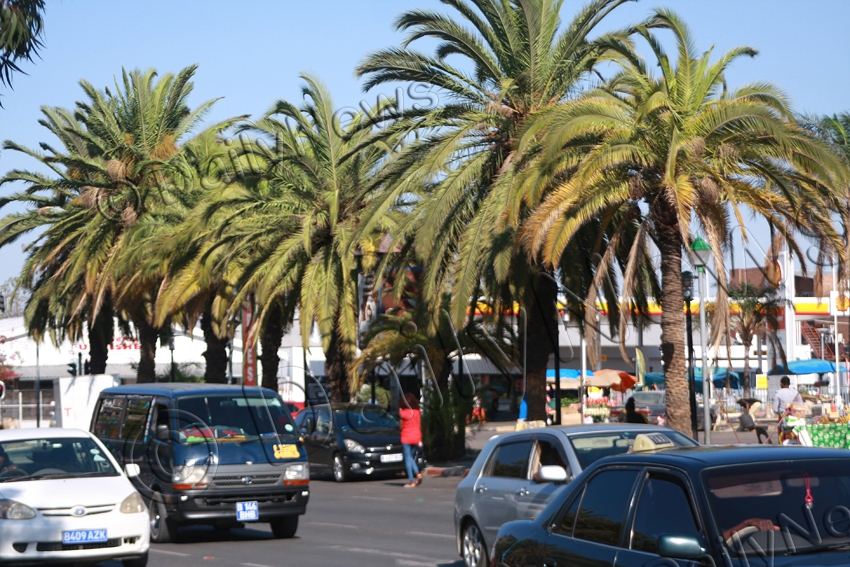The good bad of palm trees
08 Oct 2019
The palm tree is much more significant than you might think.
That is why we have the Grand Palm Hotel in Gaborone and at the sight of one, most people imagine a sunny beach setting. But these sturdy plants can also grow in a variety of other environments.
According to Luc Gabas, Palm Trees in the Snow, palm trees are commonly found in tropical areas where there is abundant rain and exceptionally good weather.
It is indigenous to the sub tropical, low lying regions of south central Africa and its habitat is open woodland, flood plains, banks of rivers and the fringes of pans and swamps.
The tree can grow up to 20 metres high and has a bare stem, which often shows a slight swelling in the middle of the trunk.
In Setswana, the tree goes by the name Mokolwane and is widely associated with the Okavango Delta, the Maun and Nata areas and sometimes the Kgalagadi Desert.
Besides providing striking landscapes, the palm tree also plays an important role in the sustenance of delta inhabitants for both animals and humans.
Betel nuts and Acai fruit all come from palm trees as well as palm oil, as its name indicates.
In other parts of the world such as Ghana, palm oil is extracted from palm fruits to make cosmetics while in Botswana, some people such as those of Tubu in the Okavango District, make palm wine which they call Motjema.
Still in Botswana, palm leaves are used for basket weaving while the stem is used for making rafters. They are also ideal for interior decoration, daily usage and as wedding gifts.
In Maun, Kasane and Nata, palms trees are usually grown and planted to complement the landscape in parks, homes and hotel parking lots because of their appealing and refreshing nature. In urban areas they are associated with luxury and ambience.
In some parts of the world, palm trees are a symbol of religion.
They are mentioned a dozen times in the Bible and Quran, while in Judaism, palms represent peace and plenty.
Clearly, the Mokolwane tree is integral to the very existence of the people of Botswana and the world, and that should explain why Batswana seem overprotective of palm trees.
Besides the good things associated with the tree, some people who live outside areas where there is abundance of the tree might be surprised to learn that palm trees double as a risk. They are loaded with flammable material and are basically shaped like giant candles.
In his book Carrying Knowledge up a Palm Tree –Poetry, 1997, Taban lo Liyong explains that palms trees are more like grass. They are monocots, which means they grow as great big grass like bundles, each with its own respiratory and circulatory systems.
A recent fire incident that occurred in Nata, in which North Gate Lodge, Big Zee Investments and a homestead were gutted by fire is a living example.
According to police investigations, the fire was allegedly started by a palm tree outside North Gate North, and caused a substantial amount of damages and fear for the villagers that would remain edged in the minds of many.
The type of palm tree that is found in Botswana is the wild date palm or Phoenix reclinata which has feather-shaped leaves. This evergreen palm tree does not grow much more than six metres in height and often occurs in dense stands, with one or more curving stems rising above the rest.
Kgosi Letsogo Kgaswe of Nata described the recent fire as the worst disaster to have happened in his village in recent years.
However, he said the good thing is that none of the employees of the affected businesses lost their jobs despite the huge damage.
He said it was by the grace of Lord that the whole village did not explode into flames because a lot of homesteads and businesses in the tourist village of Nata are littered with palm trees in a linear pattern on either side of the road, making the driving experience enjoyable and refreshing.
Kgosi Kgaswe agrees that high concentration of palm trees in a village can create a deadly fire hazard, exploding into flames in a matter of minutes if they are not properly maintained.
“If not maintained properly, palm trees can also create a deadly fire hazard, literally exploding into flames in a matter of minutes,” he added.
He explained that it is under this backdrop that in September, which is the national month of prayer against HIV/AIDS, the village leadership and the people of Nata converged at the cross roads near the two affected businesses to thank God that the fire did not engulf the whole village.
Kgosi Kgaswe explained that to avoid such incidences, people should always prune their trees and remove dead or broken fronds from the trunk as the tree grows older.
Scott Brown also argues in his book Out of the Valley that palms, and other trees, become a serious fire hazard when they are not well trimmed.
The danger is especially great when the leaves and fronds dry out and winds blow, Eucalyptus trees are oily and can easily ignite as well.
Kgosi Kgaswe said the village’s traditional leadership recently met with officials of the council and members of the Village Development Committee (VDC) and advised the two to trim all palm trees that are not in the homestead or those that were left in abandoned or old and unoccupied plots.
He said the palm trees put the village at risk of outbreaks of fire because children often play traditional games underneath and as such sometimes they leave some fire burning, which ultimately ignite the palm tree.
A tree expert and chief forest officer, Mr Antony Tema said there is no problem with the palm tree, the only problem is failure to manage it by cutting its dead leaves and branches.
Mr Tema said people must not be subjective about the tree when they are the ones who have domesticated it, adding that it is important to remove it when it has grown by default in one’s yard.
He advised people to understand the impact of any tree they grow in their homestead, but disputed that the palm tree is not 100 per cent perfect because it is considered a great fire risk. ENDS
Source : BOPA
Author : Thamani Shabani
Location : NATA
Event : INTERVIEW
Date : 08 Oct 2019






